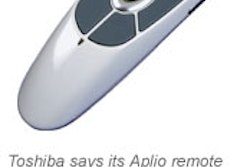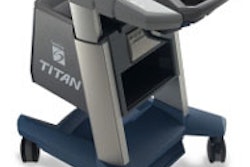External therapeutic ultrasound (ETUS) can enhance the thrombolytic efficacy of streptokinase in patients with ST elevation myocardial infarction (MI), especially in those who present long after the onset of symptoms, according to researchers at the 2003 American Heart Association (AHA) meeting in Orlando.
Dr. Xuedong Shen and colleagues from the Cardiac Center of Creighton University in Omaha, NE, randomized 94 ST-segment elevation MI patients to recombinant streptokinase (1,500,000u) or streptokinase plus ETUS. The group excluded candidates in whom thrombolysis was contraindicated.
Based on the time from symptom onset to thrombolytic therapy delivery, each group was further divided into subgroups, representing those who presented within six hours of symptom onset, or those who presented six hours or longer after symptom onset.
"Thrombolytic therapy is widely used to treat patients with ST-segment elevation MI; however, TIMI grade 3 flow is achieved only in 50%-70% of patients by regular intravenous thrombolysis," Shen said. "While enhancing the efficacy of thrombolytic agents by ETUS had been observed in many animal studies, it has not been confirmed in humans."
In the trial, ETUS was used at 0.8 MHz with 50% duty cycle at a power output of 1.4 W/cm2.
Successful reperfusion was defined as at least more than one of the following: TIMI grade 3 flow on coronary angiography; elevated ST segment decreased at least 50% within two hours after treatment; and chest pain that disappeared within two hours after treatment was administered.
Results showed that successful reperfusion was achieved in 34% of patients presenting six hours or earlier after the start of symptoms, and who received conventional streptokinase alone versus 74% in the streptokinase plus ultrasound group (p< 0.01).
Successful reperfusion occurred in 13% of patients presenting six hours or later after the start of symptoms who were assigned to streptokinase alone, compared with 53% in the streptokinase plus ETUS group (p< 0.05). Results in the streptokinase plus ETUS group are especially noteworthy, since patients presenting late are not considered good candidates for reperfusion therapy, Shen said. Two patients had mild scald, and there were no cases of reinfarction.
Shen explained that while the mechanism by which ETUS accelerates thrombolysis is unclear, acoustic cavitation is the mostly likely possibility. "It works by promoting transportation of the drug into the thrombus," he said.
By Jill SteinAuntMinnie.com contributing writer
December 9, 2003
Copyright © 2003 AuntMinnie.com



















